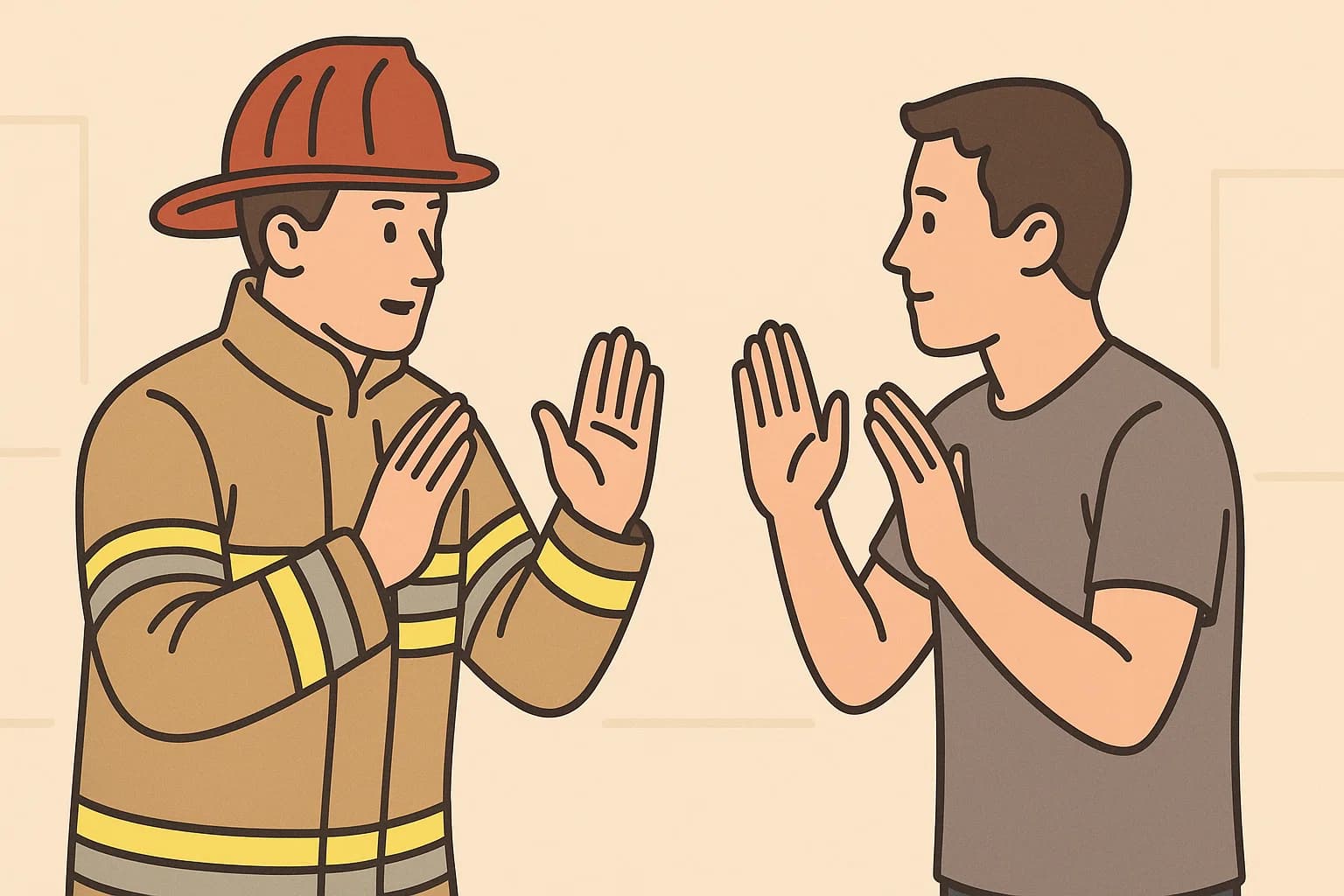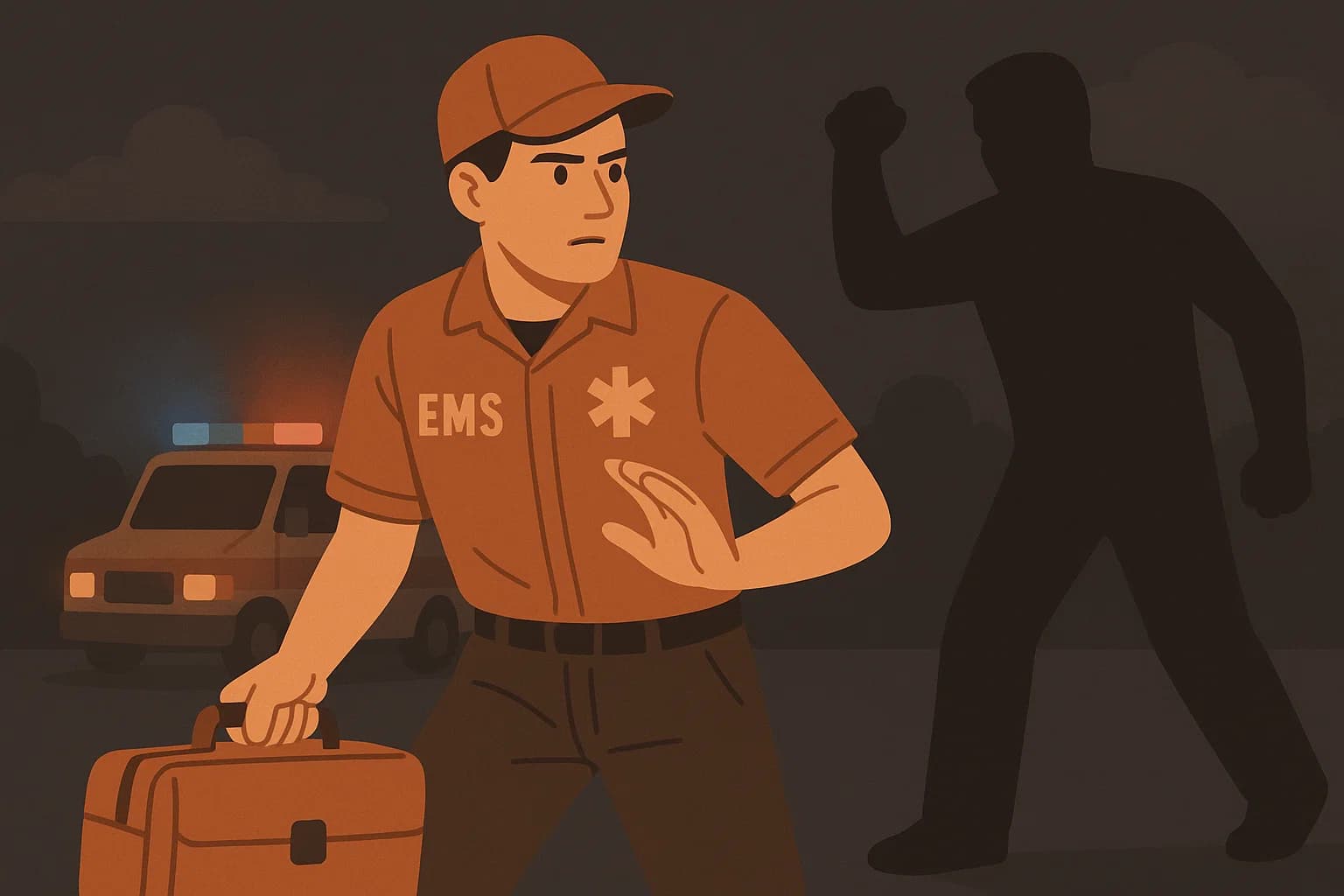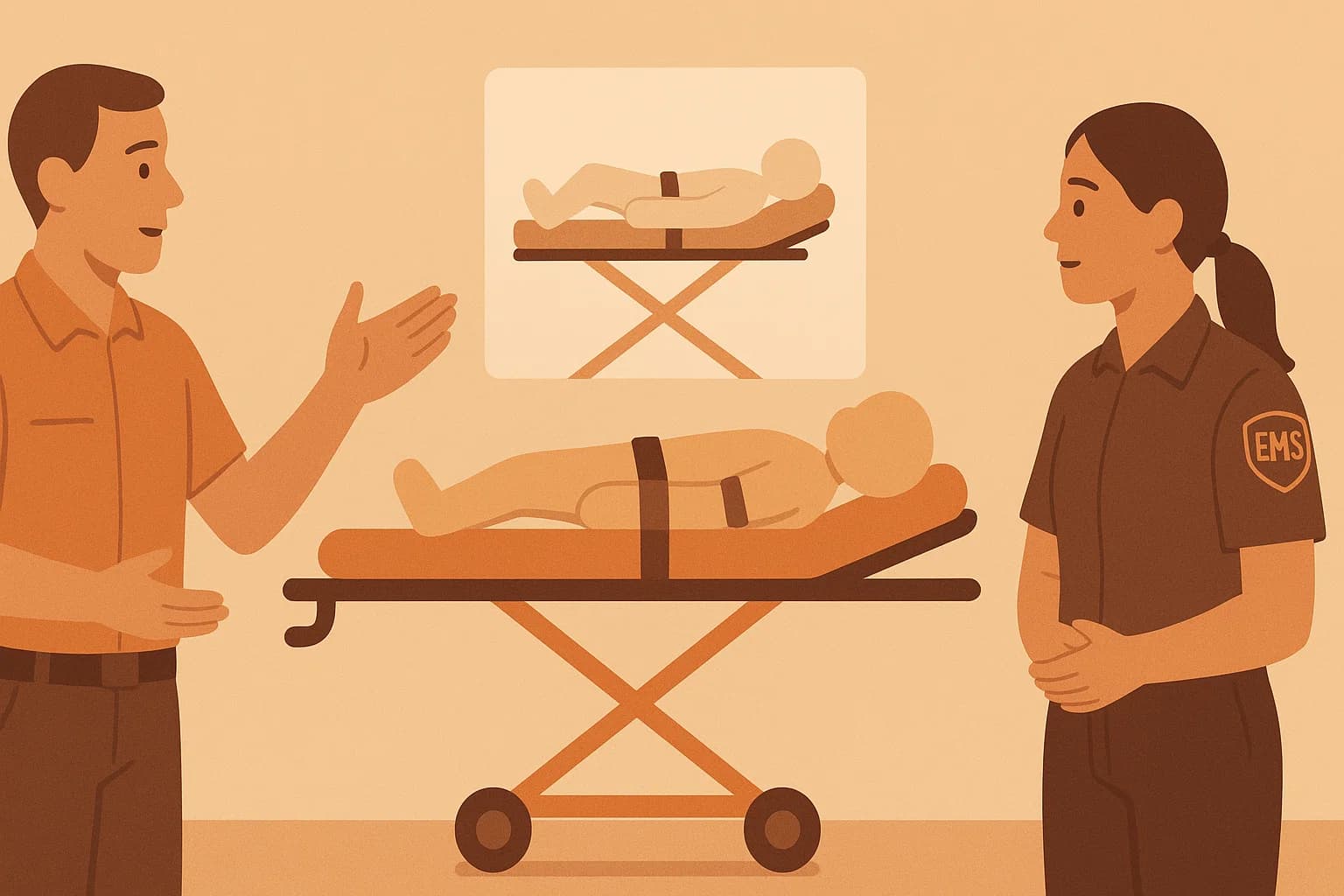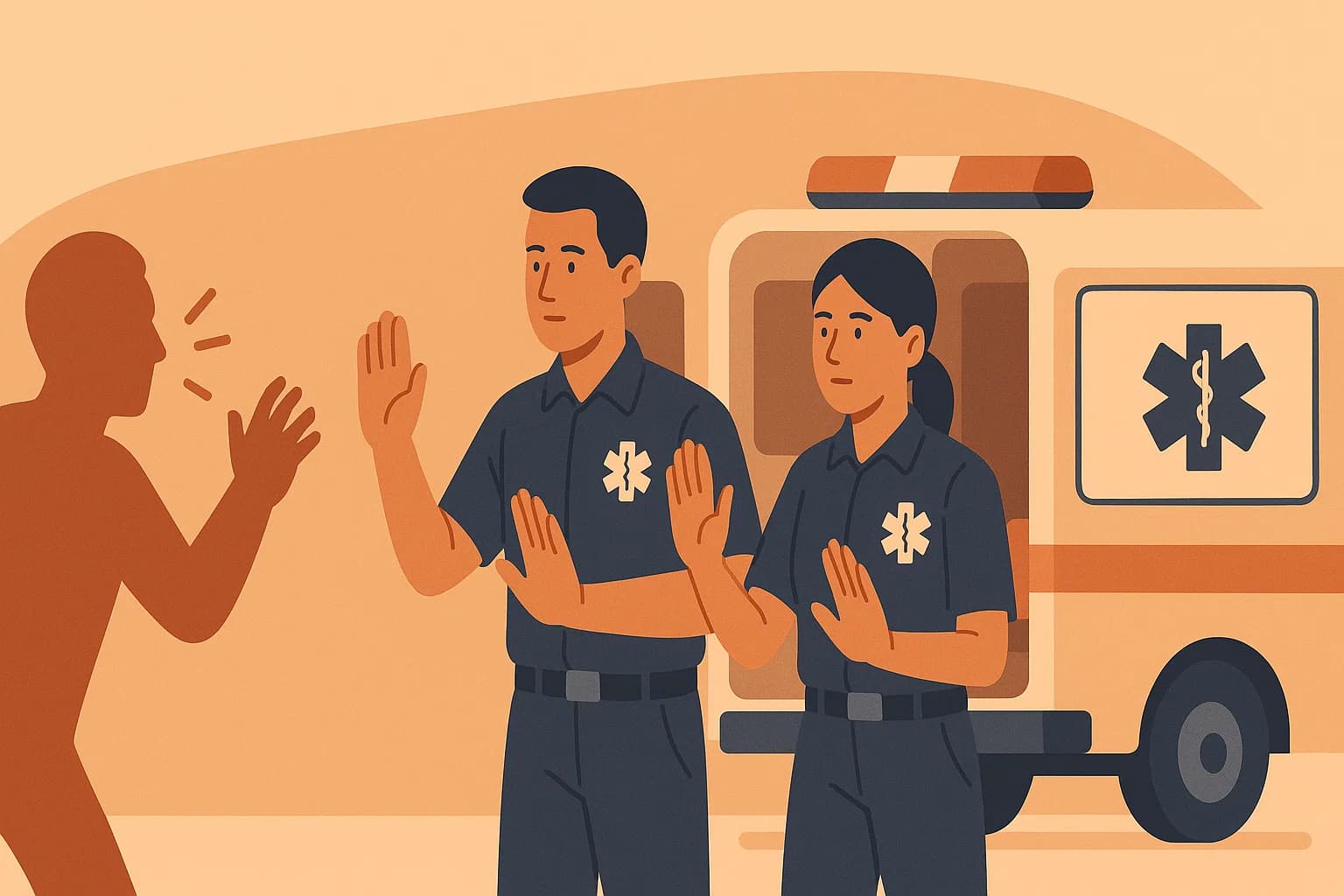Violence Against EMS: A Growing Threat to America's Lifesavers
They show up on our worst days — yet too often, EMS professionals find themselves the victims of violent attacks. A recent Spotlight on America investigation highlights a disturbing trend: violence against first responders is not rare, but alarmingly common. This highlights the urgent need for EMS violence prevention and broader healthcare workplace violence prevention efforts.
A Rising Tide of Violence
The story opens with paramedic Melanie Kemp, who survived a brutal attack inside her own ambulance. A patient escalated from verbal aggression to stabbing her and attempting to fire a police officer’s weapon — narrowly missing her. Her experience isn’t isolated; it represents a growing reality across the country.
- In Kansas City, an EMT was fatally stabbed in his ambulance.
- In Idaho, firefighters were ambushed and killed responding to a call.
- In Washington D.C., shocking footage showed a first responder beaten by a patient.
These aren’t rare anomalies — they are part of a nationwide trend of increasing aggression toward EMS, fire, and healthcare workers.
The Numbers Don’t Lie
Dr. Jennifer Taylor, a professor and epidemiologist at Drexel University, has been studying workplace violence in EMS. Her findings are staggering:
- 420% increase in calls for EMS in recent years.
- Nearly half of surveyed first responders reported experiencing physical violence in just one year.
- Violence doesn’t only occur during “high-risk” calls like shootings or domestic disputes — it can erupt on seemingly routine calls.
More calls mean more exposure, and more exposure means greater risk. EMS workers are doing more with less, all while facing heightened threats.
The Human Cost
These aren’t just statistics. Melanie still carries a scar across her abdomen as a reminder of how close she came to never returning home to her family. Many EMS providers live with the what-ifs — the knowledge that any routine call could turn violent.
It’s not just about physical wounds. Repeated exposure to aggression, threats, and assault takes a toll on mental health, job satisfaction, and retention across the EMS field.
When our responders are under constant threat, the entire system — and the communities it serves — is at risk.
Finding Solutions: Education and Training
At VEST First Responder, we believe the solution lies in education, preparation, and structured programs such as healthcare violence training, EMS tactical awareness training, and first responder safety training focused on de-escalation and survival.
The client perspective is clear:
“The most recent national spotlight shows that 46% of respondents reported being physically assaulted. The solution is education and training in how to handle possible volatile situations. De-escalation, scene safety tactics, and thought-provoked communication can lead to less violent encounters, with better outcomes.”
That means preparing responders not just with medical skills, but with:
- Healthcare de-escalation training strategies — recognizing signs of agitation and using communication to reduce tension.
- Fire department safety training and scene safety tactics — identifying threats early and positioning for safety.
- Mindset, awareness, and violent encounter training — anticipating the unexpected and staying adaptable.
By investing in this training, we empower EMS to protect themselves, their patients, and their communities.
Why This Matters for Everyone
Workplace violence in EMS isn’t just a problem for providers — it’s a problem for all of us. If paramedics and firefighters don’t feel safe responding, response times slow, staffing shortages worsen, and patient outcomes decline.
Investing in hospital staff safety training, nurse safety training, and ambulance crew safety training ensures that all branches of emergency services are protected.
The reality is simple: protecting first responders protects the public.
Final Thoughts
Violence against EMS is a disturbing, rising trend across America. Almost half of responders report being assaulted on the job. But there is a path forward — education, public safety de-escalation, emergency services violence training, and safety training can reduce risks and improve outcomes for everyone.
As a community, we owe it to our first responders to give them the tools and support they need to go home safe after every shift.
What do you think?
Share your thoughts with us — your feedback helps shape the future of first responder training.
Get in TouchKeep reading



